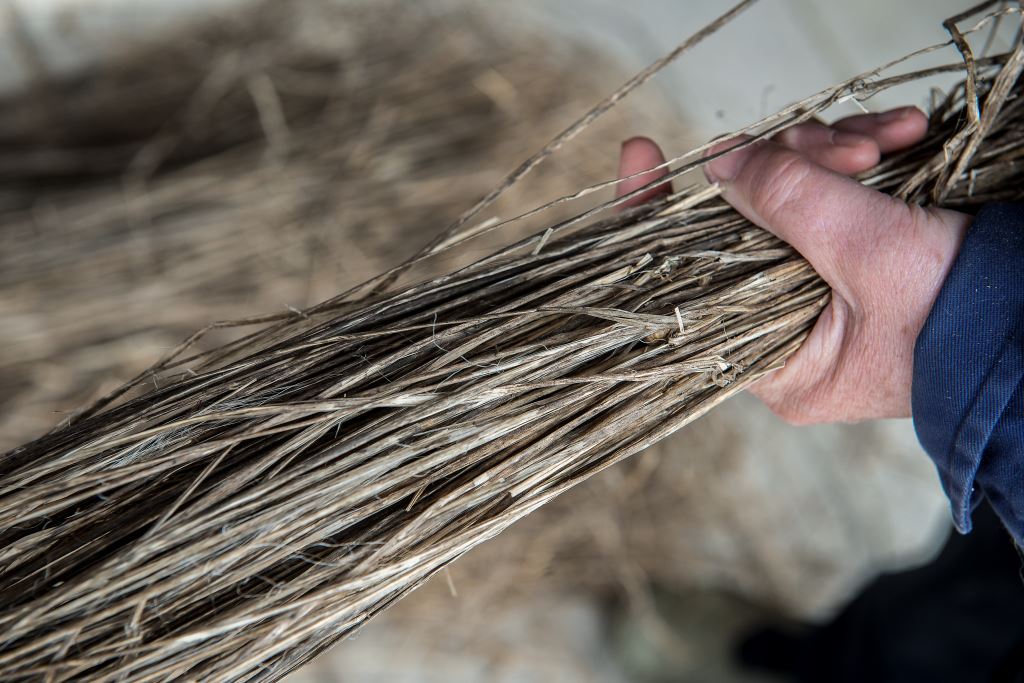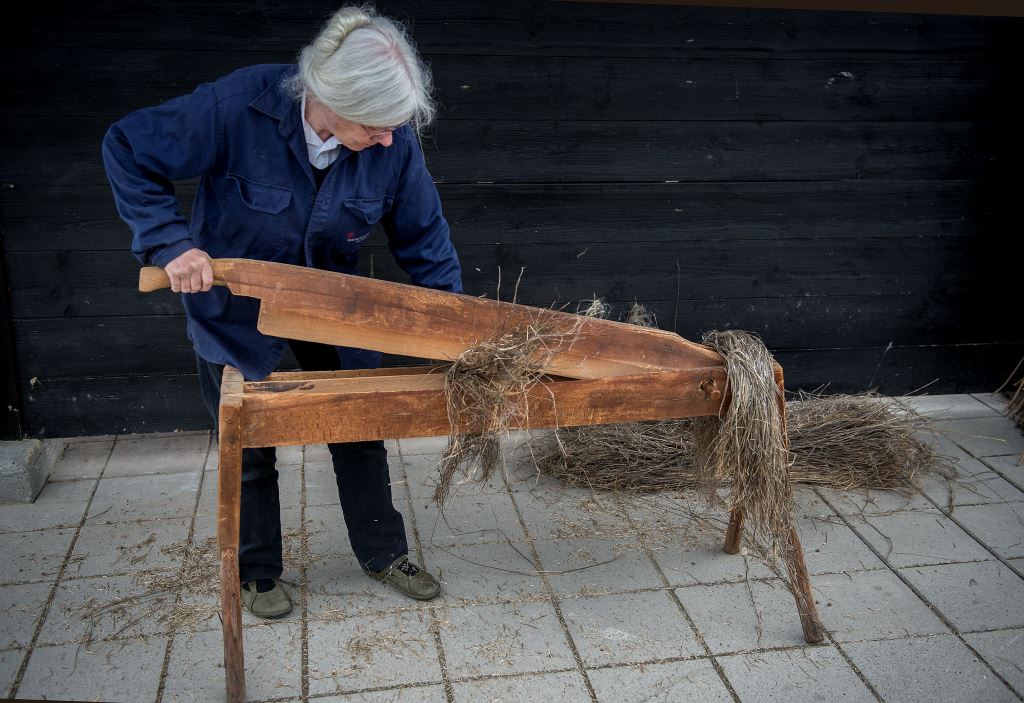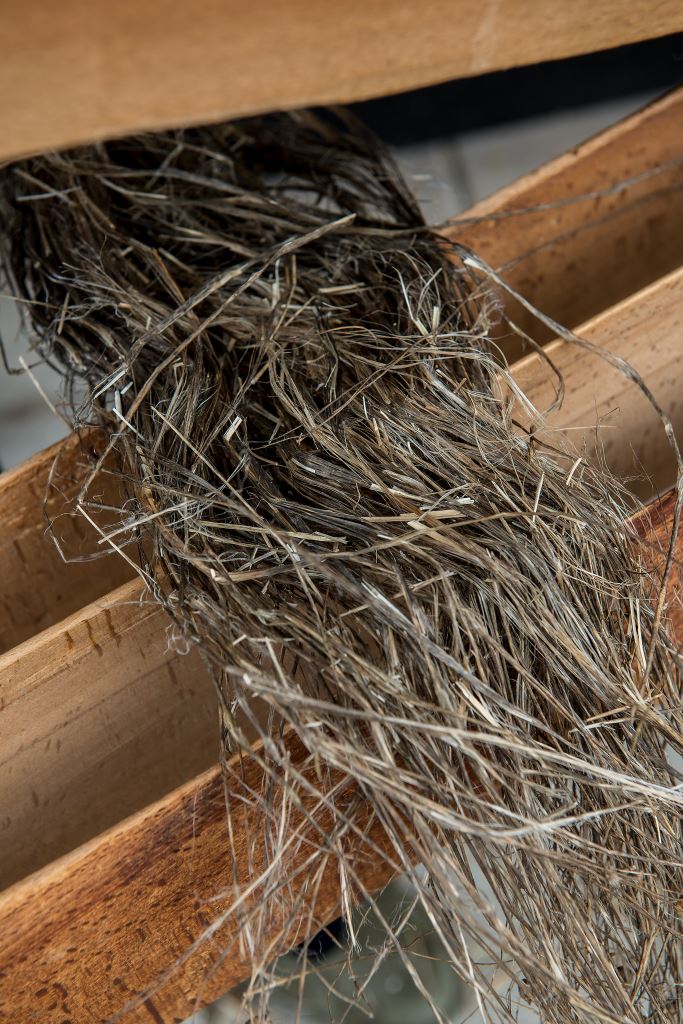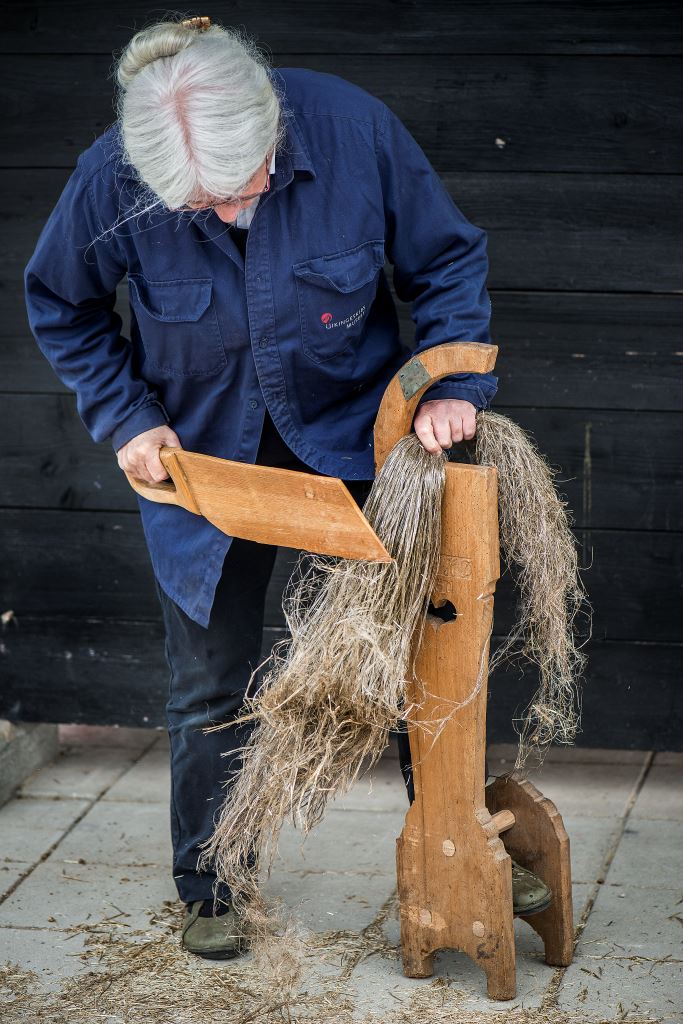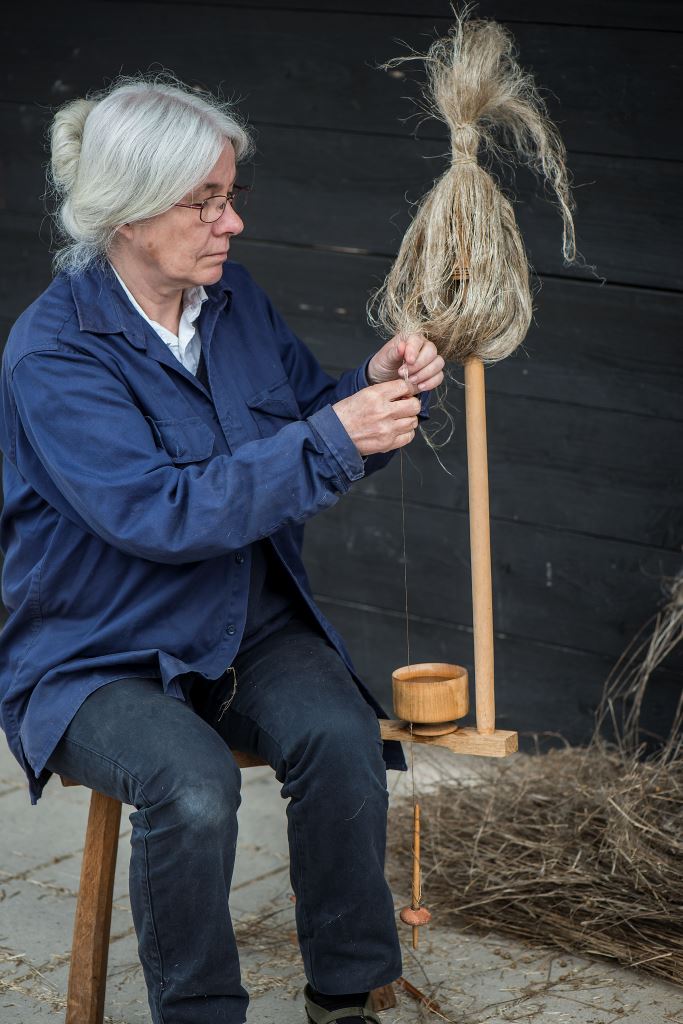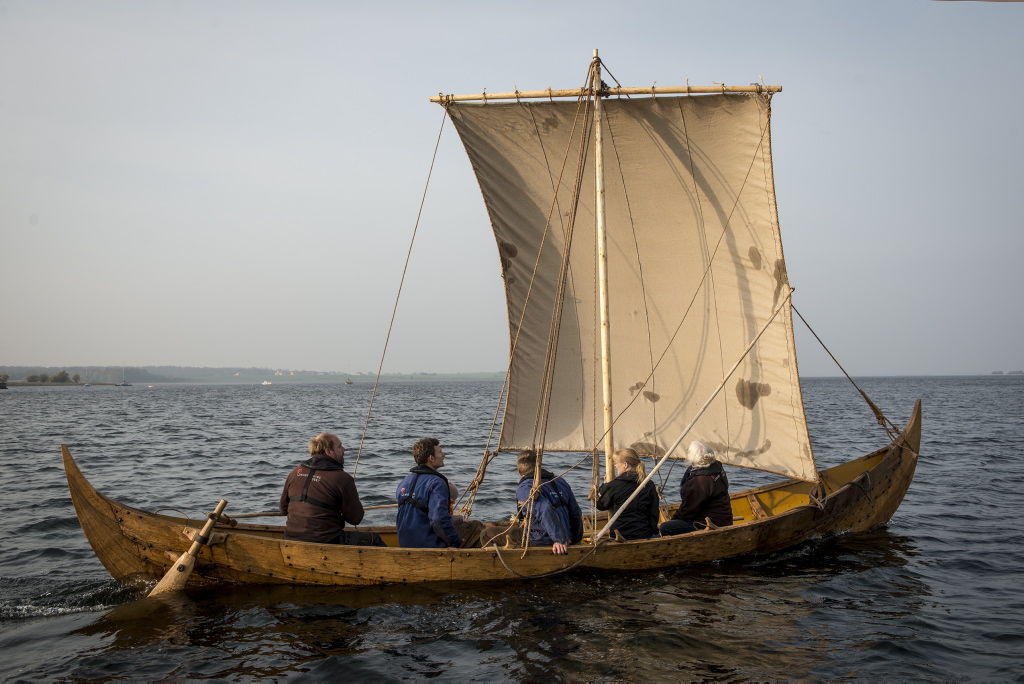Weaving a sail of flax for the Gislinge Boat
Flax has been used to produce textiles in Scandinavia since the Iron Age. Transforming the plant into fibres that can be spun, and then woven, is a long and complex process.
- The plant stems are pulled by hand, so the end of the stem remains intact
- The plants are rippled (combed) to remove the seeds from the stems
- The flax is then retted (submerged in water for 1-2 weeks, or laid on a meadow for 4-8 weeks), to loosen the fibres from the pith The stalks must dry out before being broken to separate the woody pith from the fibres
- The fibres are then scutched (beaten) to remove the small fragments of pith
- Lastly, a hackle (comb with long iron teeth) is used to remove the final impurities and straighten the fibres
- The flax is now ready to be spun
This is the first time the Museum has produced a handwoven sail from flax. No sails made from flax have yet been found from the Iron or Viking Ages. However, other archaeological evidence demonstrates that flax was grown and processed.
The sail is made up of five long panels, which will be sewn together to make the finished 10m2 sail. The Museum’s weaver will produce one of the panels; the other four panels are being woven by weavers from the Institute for the Blind and Partially Sighted. When complete, the sail will be impregnated to help prevent rot.
